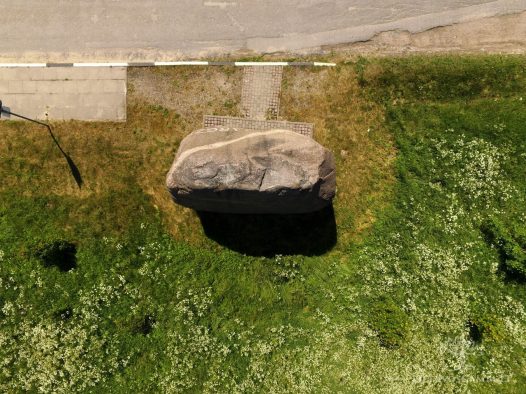Lithuania isn‘t a rocky country, so the unusually large stones looming in the flat fields and forests have been playing with the people‘s imagination from early on. How did a lonely boulder weighing a few hundred tons appear in the plains? Maybe the dropped it out of its sack while running? Or maybe the pixies hid their treasure underneath and marked it this way?
Cursed and Blessed – What the Largest Stones of Lithuania are Hiding?
Actually, the moving glaciers brought the boulders to our country tens of thousands of years ago. They are natural monuments of nature that have been worshiped in the times past, shrouded in legends, used as altars or sanctuaries during rituals. It was believed that some stones are haunted and others provide fertility and power by just sitting on them. Some boulders were thought to be sacred or cursed. Boulders found by each community were given a certain role in the lives of ancient people.
Currently, the large stones of Lithuania are objects attracting foreign and local tourists. The most visited and shrouded in stories stone of Lithuania is the Puntukas looming in the districts of Anykščiai. This 265 ton weighing giant is 7,3 meters in length and 5,7 meters in height. As the legend says that the devil was carrying Puntukas in order to throw it on the church, which was built in his path. As the wicked one was carrying the stone, the rooster crowed and the devil disappeared leaving the stone to lie. Another story explains the nature of the stone’s name. The devil had to do something with it as well. He wanted to throw the stone on a house of a with-doctor, but he missed. The stone fell on the house where the harpy of the village, named was Puntukas, was living. This is where the name of the boulder came from.
In our time, Puntukas became a monument for the heroes of Lithuania – for the first Lithuanian aviators S. Darius and S. Girėnas, who were the first to fly over the Atlantic Ocean in a self-made airplane. Their bas-reliefs are engraved in the boulder together with the words dedicated to fellow countrymen.
Only one boulder of our country surpasses Puntukas in size – the Barstyčiai stone. The ship-shaped stone lodging at the village of Puokė weighs 680 tons, is 13 meters in length and 7, 5 meters in width. It is thought that this stone was brought here by the glaciers from Finland over 14 thousand years ago. The stone remained underground for quite a while, until it was found and removed only in 1957. As the story tells that in that place where the stone is standing there once was a pagan shrine for the god Perkūnas.
Not only are the largest boulders interesting. Some stones, which are not so magnificent in their dimensions, hide interesting and even creepy stories. For example, next to the Tauragnas Lake in the forests of Utena, you can visit Mokas and Mokiukas. The legend says that once a family was crossing a lake. The father and the son swam across and the mother drowned. The father and the son were crying on the shore until they turned to stone.
For those who love creepy stories would probably take interest in the looming stones in Kretinga district – Daubos kūlis and Kalniškės stone, which can be found not so far away – in the district of Klaipėda. Until this day the residents of local villages say that these stones are haunted. Visit them, if you believe in ghosts and like the chills running down your spine. Or maybe set up camp next to them? Who knows what interesting things you might get to see during the night next to these boulders.
The lesser known stones, which can be discovered during the picnic, are also shrouded in beautiful legends. In the picturesque forests of Varėna district look for a Witch stone. Long ago this stone was 7 meters in length and 3 meters in height, but now it is split in 13 pieces and covered in moss. The legend says that one evil soul was carrying the stone for the construction of the witch’s castle. But, as it is a common thing to happen to the evil creatures in Lithuanian folklore, the stone slipped from their hands, fell down, split into pieces and was left to lie in the forest.
So before you visit the largest stones of Lithuania, learn what myths, stories and superstitions they are shrouded in. Then each such journey will turn into a magical trip.
You can find many sights of folklore at www.lietuvosgamta.lt website. Here you’ll also be able to view photographs and short videos of the largest stones of Lithuania, listen to audio stories. And when you have chosen the stone that is most interesting to you, you’ll find its coordinates and location on the map.


























